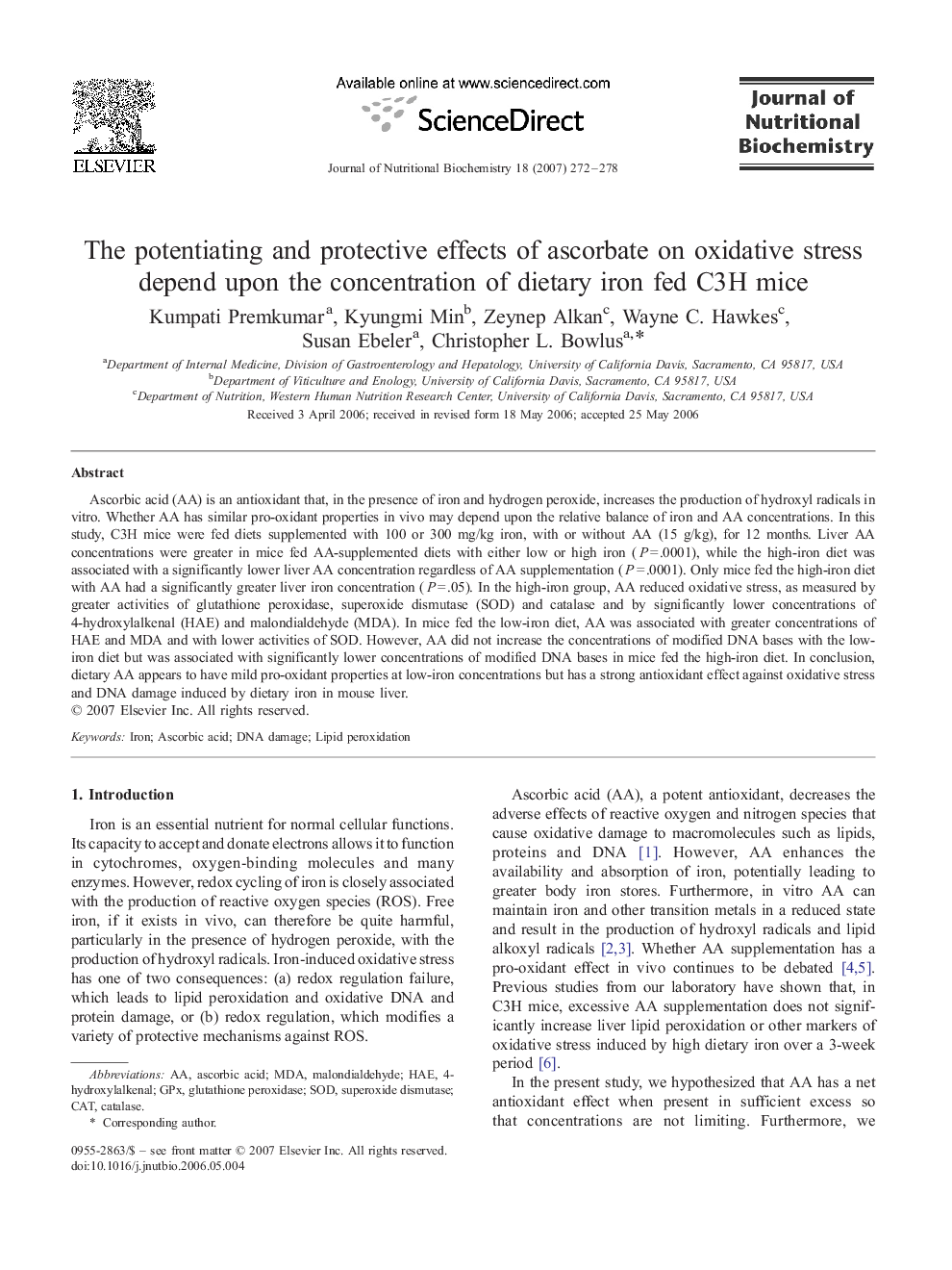| Article ID | Journal | Published Year | Pages | File Type |
|---|---|---|---|---|
| 1991086 | The Journal of Nutritional Biochemistry | 2007 | 7 Pages |
Abstract
Ascorbic acid (AA) is an antioxidant that, in the presence of iron and hydrogen peroxide, increases the production of hydroxyl radicals in vitro. Whether AA has similar pro-oxidant properties in vivo may depend upon the relative balance of iron and AA concentrations. In this study, C3H mice were fed diets supplemented with 100 or 300 mg/kg iron, with or without AA (15 g/kg), for 12 months. Liver AA concentrations were greater in mice fed AA-supplemented diets with either low or high iron (P=.0001), while the high-iron diet was associated with a significantly lower liver AA concentration regardless of AA supplementation (P=.0001). Only mice fed the high-iron diet with AA had a significantly greater liver iron concentration (P=.05). In the high-iron group, AA reduced oxidative stress, as measured by greater activities of glutathione peroxidase, superoxide dismutase (SOD) and catalase and by significantly lower concentrations of 4-hydroxylalkenal (HAE) and malondialdehyde (MDA). In mice fed the low-iron diet, AA was associated with greater concentrations of HAE and MDA and with lower activities of SOD. However, AA did not increase the concentrations of modified DNA bases with the low-iron diet but was associated with significantly lower concentrations of modified DNA bases in mice fed the high-iron diet. In conclusion, dietary AA appears to have mild pro-oxidant properties at low-iron concentrations but has a strong antioxidant effect against oxidative stress and DNA damage induced by dietary iron in mouse liver.
Keywords
Related Topics
Life Sciences
Biochemistry, Genetics and Molecular Biology
Biochemistry
Authors
Kumpati Premkumar, Kyungmi Min, Zeynep Alkan, Wayne C. Hawkes, Susan Ebeler, Christopher L. Bowlus,
